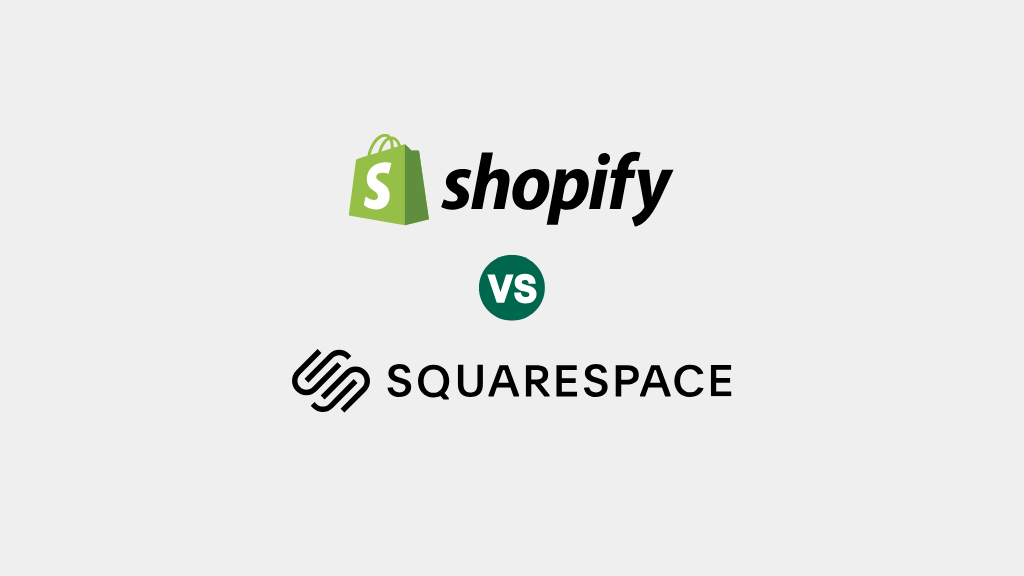If you’re trying to decide between Shopify and Squarespace, you’re not alone. These two platforms dominate the website building space — but they approach things from rather different starting points.
Shopify was built from the ground up as an ecommerce platform. Its main focus is giving merchants everything they need to run a professional online store: international selling tools, advanced checkout options, and a vast ecosystem of integrations.
Squarespace, by contrast, started life as a website builder. Its DNA is in design, content presentation, and ease of use — only later did ecommerce tools become part of its offering.
So which platform is right for you? Well, in this post I’ll walk you through the main reasons to use Shopify over Squarespace, and the key areas where Squarespace wins. By the end, you’ll have a much clearer picture of which platform is right for you.
My quick verdict on Shopify vs Squarespace
If your main goal is to build a serious online store, Shopify is definitely the better choice. It gives you far more ecommerce features than Squarespace — stronger international selling tools, more payment gateway options, better automatic tax feattures and access to far more apps and integrations.
However, if your focus is more on content and design, Squarespace is usually the smarter option. Its templates are more stylish, its drag-and-drop editor is easier to use and it comes with better tools for blogging, image presentation and content monetization.
I’ll continue the full comparison now by going through the key reasons to use Shopify over Squarespace.
Reasons to use Shopify over Squarespace
1. Shopify is better for selling internationally
If you’re planning to sell products beyond your home market, Shopify is the better option.
This is down to its sophisticated multi-currency selling tools (provided by its ‘Markets’ feature). These let you display product prices in your customer’s local currency and let them check out in it too — this help you build trust with international buyers and reduce cart abandonment.
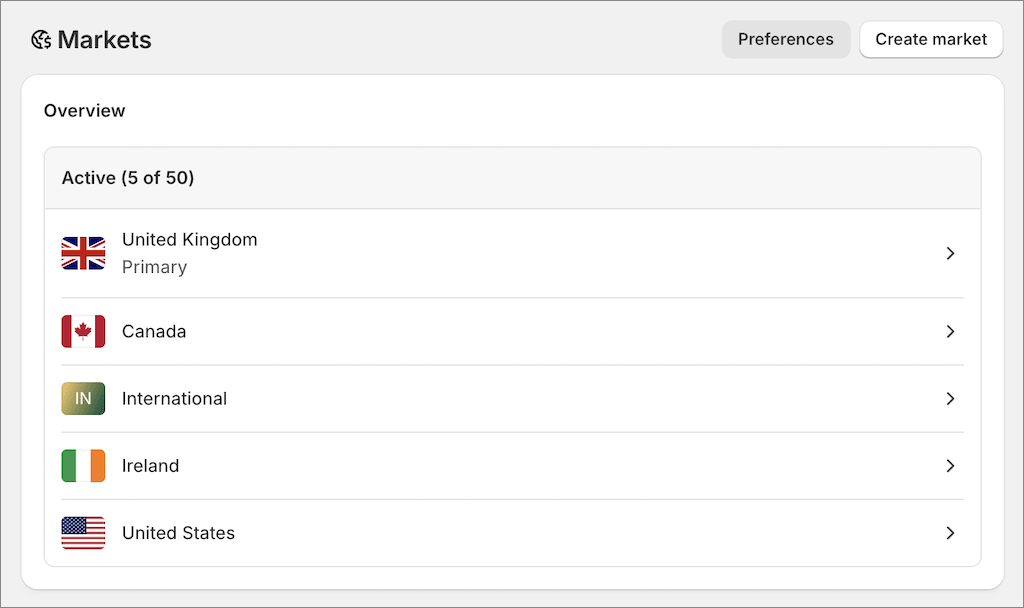
Squarespace, by contrast, currently only allows sales in a single currency. So if for example you’re based in the UK but want to sell to US or Australian customers, you’ll have to stick with displaying your product prices in Sterling — not exactly ideal for scaling your business.
Multilingual functionality is also stronger on Shopify. The platform lets you create different versions of your store in multiple languages easily and without additional fees. Squarespace does technically faciliate multilingual sites too, but via the third-party (and paid-for) tool Weglot.
While Weglot works well, it can get very expensive if you’re using it to run a lot of different language websites, or are dealing with a high word count.
In short, for scaling internationally, Shopify is by far the better choice — of the platforms I’ve tested to date, it’s arguably the best for dealing with multi-currency selling.
2. Shopify works with more payment gateways
A payment gateway is a tool that processes card transactions on your website. The more gateways you support, the easier it is for your customers to pay you in the way that suits them.
Shopify really shines here. It supports over 100 payment gateways worldwide — including all the big global players (PayPal, Stripe, Authorize.net, Apple Pay), as well as local and region-specific ones. This gives you huge flexibility over how you accept payment for your products — this is particularly important if you’re selling into markets with strong preferences for certain local payment methods.
Squarespace, on the other hand, only lets you use five payment processors: Squarespace Payments, Stripe, PayPal, Square and Afterpay. This is fine if you’re selling domestically, but as with the platform’s lack of multi-currency selling features, is a bit limiting if you want to reach a truly global audience.
3. Shopify is better for dropshipping
Dropshipping is one of the most popular ecommerce models available, particularly for new entrepreneurs. It lets you sell items without manufacturing, storing, or shipping them yourself — you just list products on your store, and when somebody orders one, the details get automatically passed onto a third-party supplier for fulfillment.
Shopify has long been one of the best platforms for dropshipping. It integrates with a vast range of suppliers and dropshipping apps — from giants like DSers to niche providers for print-on-demand, fashion and electronics. This gives you a huge amount of choice in terms of what you can sell (see my screenshot below for a flavor of these).
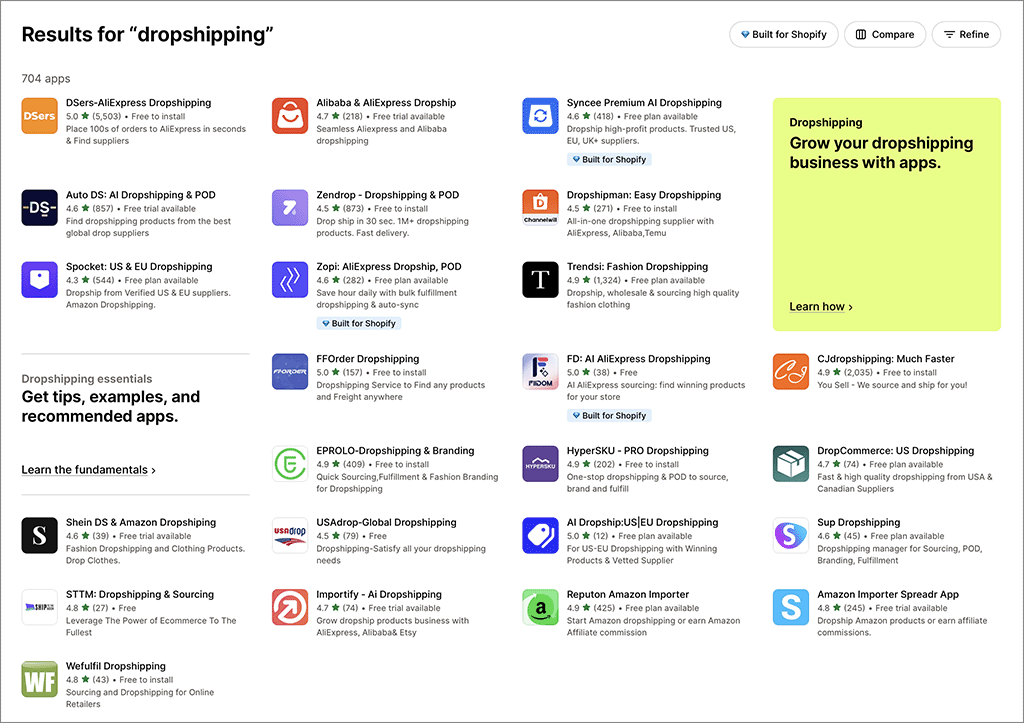
Squarespace has been adding dropshipping features in recent years — you can now connect the platform to a few suppliers via its ‘extensions’. But its offering here is still tiny compared to Shopify’s.
Utlimately, if dropshipping is the key thing you want to do, Shopify is the clear winner.
4. Shopify’s automatic tax tools are more sophisticated
Selling online often means applying different sales tax rates across multiple regions. Get this wrong, and you can face compliance issues or unhappy customers.
Shopify simplifies things considerably here by providing very good automatic tax calculation features. These work across a wide range of countries, and let you apply correct tax rates at checkout without much in the way of manual setup.
Even complex frameworks like the EU VAT MOSS rules (which govern how digital products are taxed across EU member states) can be handled automatically using Shopify.
Squarespace is much more limiting here. Its automatic tax calculation features can only be used in the US, and only via a third-party tool called TaxJar. Squarespace users based outside the US may find themselves doing a lot more manual setup and bookkeeping work to stay on top of tax calculations.
5. Shopify offers more apps and integrations
One of Shopify’s biggest selling points is its app ecosystem. With more than 13,000 apps available in its marketplace, the platform lets you extend your store in almost any direction you can think of. Whether you’re looking for advanced analytics, subscription billing, shipping automation, loyalty schemes or AI product recommendation features, you’ll find an app that provides the functionality you need.
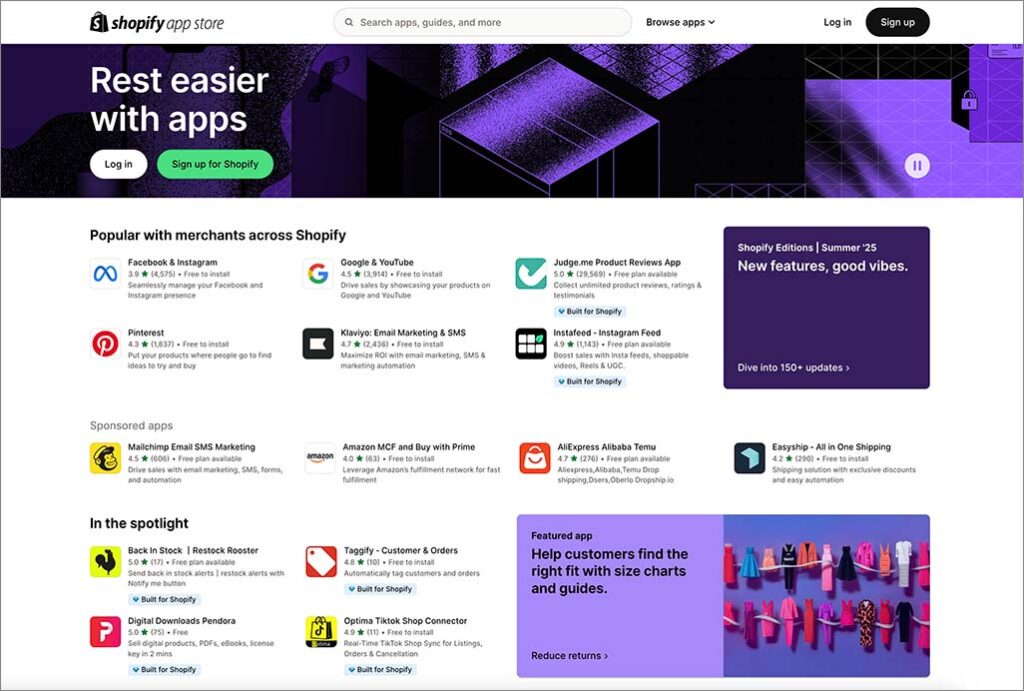
Squarespace, by comparison, offers a small number of apps in its extensions marketplace — I counted around 40 at time of writing. These cover the basics — accounting tools like Xero, shipping apps like ShipStation, and a few marketing add-ons are catered for — but ultimately, the Squarespace app offering is nowhere near as extensive as Shopify’s.
6. Shopify gives you free email marketing features
Email marketing is one of the most effective ways to drive ecommerce sales.
And helpfully, Shopify gives you access to its own email marketing tool — Shopify Email — on most of it plans. This lets you send up to 10,000 newsletters per month for free — a generous allowance that will work well for small to medium-sized online stores.
The automation features available from Shopify Email are quite sophisticated too, allowing you to craft highly bespoke customer journeys that cover everything from order confirmations to abandoned cart reminders to upsells triggered by page visits.

Squarespace also offers built-in email marketing features (via its Squarespace Email Campaigns tool), but you have to pay extra for it. Even its lowest tiers come with monthly costs, which can add up quickly as your list grows.
This makes Shopify the more budget-friendly choice if email marketing is an important part of your sales strategy.
7. Shopify gives you more control over your site’s code
For advanced users or businesses with access to developers, Shopify’s openness is a big advantage.
It gives you full access to your store’s HTML, CSS and Liquid templates, and this lets you customize your store’s look and feel extensively.
Squarespace, by contrast, is a much more “closed” system. It lets you add custom CSS and snippets of HTML code to your site, but doesn’t let you dig into the full template codebase. This makes it much harder to build truly unique features or layouts with the platform.
Reasons to use Squarespace over Shopify
So far, Shopify has come across as the powerhouse — but Squarespace has its own important strengths that shouldn’t be overlooked. These can make it a better option for certain kinds of users, especially those focused on content and design.
I’ll walk you through the area where Squarespace wins now.
1. Squarespace gives you more free templates
Squarespace gives you access to around 180 free templates, and these cover a wide range of industries and use cases.
Shopify, by contrast, only offers 24 free themes. And although a large range of premium themes can be used with the platform (I counted 922 in the Shopify app store at time of writing), these can be expensive, with prices ranging from $100 to $500.
And when it comes to aesthetics, I’d argue that Squarespace’s templates are simply more stylish. They feature bold typography, full-bleed images, and modern layouts that make them look like custom-designed sites straight out of the box.
Although Shopify’s themes are professional in appearance, they are arguably a bit more ‘corporate’ or conventional in nature — they don’t have the ‘wow’ factor that many Squarespace templates provide.
2. Squarespace is easier to use
Squarespace has long been praised for its ease of use, and with good reason. Its interface is clean, intuitive and works in a way that won’t scare web design novices.
Its Fluid Engine drag-and-drop editor is especially good — this lets you position elements anywhere on a page and fine-tune layouts to look exactly how you want them to.
Shopify’s editor is more rigid in nature: while I’ve witnessed it improving massively over the years, it’s still not as intuitive as Squarespace’s. I use both interfaces extensively, and I always manage to design layouts more quickly with Squarespace.
Ultimately, if you’re completely new to building websites, you’ll usually feel more at home with Squarespace. And if you’re an experienced designer, you’ll be able to get results faster with it.
3. Squarespace gives you more website building features
Because Squarespace started life as a website builder, it has stronger content management features. In particular its blogging tools are better than Shopify’s, with more flexibility provided around formatting, categories, and design.
Squarespace also gives you more options for creating galleries, forms, and complex page layouts.
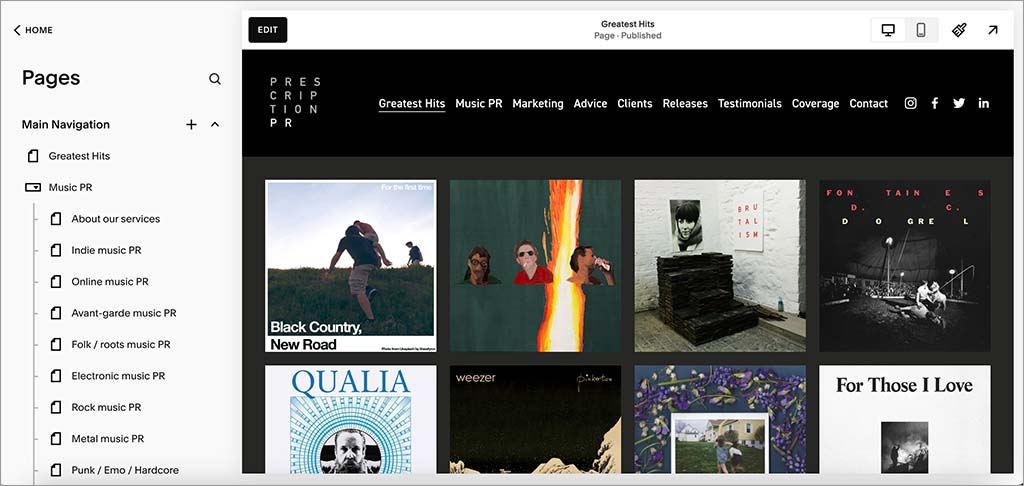
So if your website needs to be as much about content and storytelling as it is about ecommerce, you’ll usually find Squarespace the better option.
4. Multi-user access is a lot cheaper in Squarespace
Collaboration is easier — and cheaper — with Squarespace. This is because most Squarespace plans let you add unlimited contributors at no extra cost — great for businesses with larger teams managing content, marketing or product updates.
Shopify, however, limits staff accounts heavily, with its popular $39 per month Basic plan only giving you access to one staff account. If you need more seats, you’ll need to upgrade to the $105/month Shopify plan, which still only caters for five users.
5. Squarespace gives you built-in content monetization features
Squarespace has dedicated features for selling memberships, subscriptions, and online courses. These are tightly integrated into the platform and easy to use — no extra setup required beyond choosing the right plan.

Shopify requires apps for this, which adds complexity and cost.
So if your business model focuses on monetizing digital content rather than selling physical products, Squarespace might be a better fit for you.
6. Squarespace handles images better
Shopify requires all product photos to be uploaded in identical aspect ratios — otherwise, your catalog can look messy. This often means extra editing work.
By contrast, Squarespace automatically crops your product images to a chosen aspect ratio, ensuring a consistent look across your store.
Alternatives to Shopify vs Squarespace
There are lots of alternatives available to Shopify and Squarespace. If your key aim is to create a powerful ecommerce site (and one that can be used to sell internationally), then solutions like BigCommerce, WooCommerce and PrestaShop can work well. Note however that the learning curve for all three is higher than that which you’ll encounter from either Shopify or Squarespace.
If you’re aiming to build a store where content management is the key concern, you might want to consider WordPress, Wix or Webflow.
Verdict: Shopify or Squarespace?
Ultimately, this decision comes down to your business goals.
If your aim is to become a serious online merchant — selling internationally, scaling your business significantly, and adding advanced functionality over time — Shopify is the better choice. Its international selling tools, app store, and overal scalability make it the stronger ecommerce solution.
But if your goal is to create a beautiful content-focused site and sell a few products on the side, Squarespace may suit you better. Its templates are gorgeous, its editor is more user-friendly, and it offers great value for teams and creators who want to monetize content.
Chris Singleton is the Founder and Director of Ecommercetrix.
Since graduating from Trinity College Dublin in 1999, Chris has advised many businesses on how to grow their operations via a strong online presence, and now he shares his experience and expertise through his articles on the Ecommercetrix website.
Chris started his career as a data analyst for Irish marketing company Precision Marketing Information; since then he has worked on digital projects for a wide range of well-known organizations including Cancer Research UK, Hackney Council, Data Ireland, and Prescription PR. He then went on to found the popular business apps review site Style Factory, followed by Ecommercetrix.
He is also the author of a book on SEO for beginners, Super Simple SEO.
